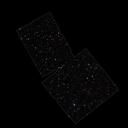Scientists confirm JWST has found the earliest galaxies yet seen

Published Date: 12/15/2022
Source: axios.com
The James Webb Space Telescope has discovered the earliest galaxies yet seen, scientists confirmed last week.
Why it matters: One of the JWST's main tasks is to gather data about the earliest galaxies that formed in the universe, shedding light on how the cosmos came to be.
- These kinds of discoveries are exactly what scientists were hoping for when the powerful telescope launched.
The latest: Scientists have confirmed the discoveries of a clutch of galaxies that formed less than 400 million years after the Big Bang occurred about 13.8 billion years ago.
- The JWST spotted these galaxies earlier this year, but recent observations have confirmed their existence and their ages.
- “For the first time, we have discovered galaxies only 350 million years after the Big Bang, and we can be absolutely confident of their fantastic distances,” Brant Robertson, a co-author of the study detailing these findings, said in a press release.
- The research team looked at the light of 25o early galaxies. From that light, astronomers were able to determine the chemical makeup of those galaxies and how old they are.
The big picture: Scientists still aren't sure exactly how the earliest galaxies in the universe formed.
- One theory holds these galaxies formed out of huge clouds of gas and dust that clumped and collapsed, forming dense clouds that started to spin and create early galaxies.
- Another idea suggests smaller clumps of gas and dust merged to create larger galaxies.
- Over the course of its life in space, the JWST will help scientists figure out more about how these early galaxies evolved.
Go deeper: Astronomers search for light that holds answer to how earliest galaxies formed